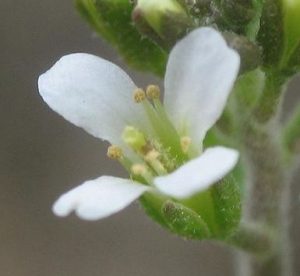To enrich seeds with nutrients and thus minimize nutritional deficiencies in Zinc worldwide, scientists are working on so-called biofortification solutions. In an article published in Nature Plants, two research communities have combined their skills in molecular biology and spectroscopy to identify the genes involved in transferring zinc from the mother plant to edible seeds. An essential first step towards biofortification.

According to the World Health Organization, around 2 billion people suffer from iron (Fe) and zinc (Zn) deficiency. Zinc deficiency is thought to be responsible for around 16% of lower respiratory tract infections, 18% of malaria and 10% of diarrhoeal diseases worldwide. This micronutrient is normally supplied to the body through food. Unfortunately, cereals, which account for a large proportion of the world’s nutritional intake, are low in zinc.
The biofortification of cereals is a promising method for combating malnutrition worldwide. The best-known example is golden rice, developed at the Swiss Federal Institute of Technology in Zurich to overcome vitamin A deficiencies. To achieve such results, it is first important to understand the precise functioning of the plant, and in particular to identify the genes that play a role in the accumulation and distribution of elements. To this end, a consortium of researchers from different European countries was formed to understand which genes are involved in the transfer of zinc from the mother plant to the consumable part of the seed.
The study focused on the model plant Arabidopsis thaliana, also known as Arabette des dames, whose genome has now been completely sequenced. After preliminary tests and a review of the scientific literature on zinc homeostasis

Within the consortium, teams from the Ecologie fonctionnelle et environnement (ECOLAB – CNRS/Univ. Toulouse Paul Sabatier/INP Toulouse), Nanosciences et innovation pour les matériaux, la biomédecine et l’énergie (NIMBE – CEA-CNRS) and Institut Paul Scherrer laboratories in Switzerland collaborated to study the distribution and local concentrations of zinc in seeds. State-of-the-art spectroscopic techniques such as X-ray micro-fluorescence on synchrotron radiation and particle-induced X-ray photon emission, coupled with Rutherford backscatter spectroscopy on the CEA Saclay nuclear microprobe(see Figure) were used. Zinc blockage at the seed coat level in hma4 and hma2hma4 mutants was thus confirmed.
The interdisciplinary approach used in this work, combining molecular biology and spectroscopy, revealed the involvement of two genes in zinc transfer in the seed embryo. The next steps in the project are to study the possible transposition of these results to plants of agricultural interest such as wheat or rice, and to attempt to over-express these genes to increase zinc accumulation.
References
The zinc homeostasis network of land plants, S.A. Sinclair and U. Krämer, Biochim Biophys Acta. 1823(9) (2012) 1553.
| Mother plant-mediated pumping of zinc into the developing seed
L.I. Olsen, T.H. Hansen, C. Larue, J.T. Østerberg, J. Liesche, U. Krämer, S. Surblé, S. Cadarsi, V.A. Samson, D. Grolimund, S. Husted, M. Palmgren Nature Plants (2016), published online 11/04. |
 |
Highlights on the CEA’s “Fil Sciences et Techno” and on the CNRS/INEE website.

Contacts :
- CEA: Suzy Surblé(IRAMIS/NIMBE).
- CNRS: Camille Larue(ECOLAB).
Collaboration :





